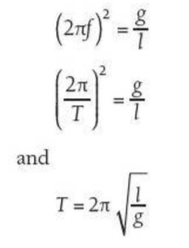Time Period of Oscillations
Summary
⇒ We can combine two of the equations that we used in the previous notes to produce a further equation that links the time period of the oscillations, T, to the mass of the oscillating particle, m, and the force per unit displacement, k
⇒ The two equations that define the motion of a simple hamonic oscillator that we need fom the earlier sections are equations (i) and (iv):

⇒ Once you recognise that a particle is oscillating with SHM, you can use this general solution to calculate the time period of any oscillator
Example
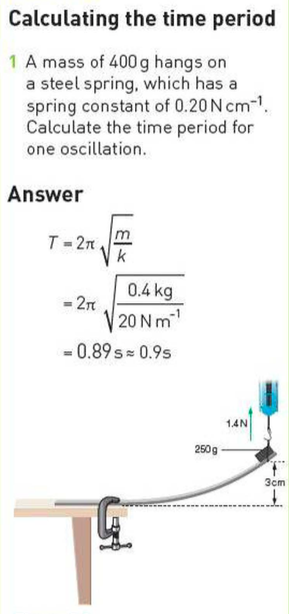
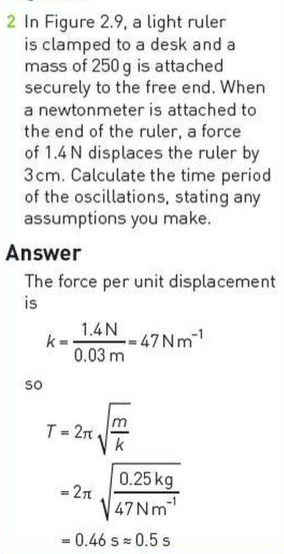
The Simple Pendulum
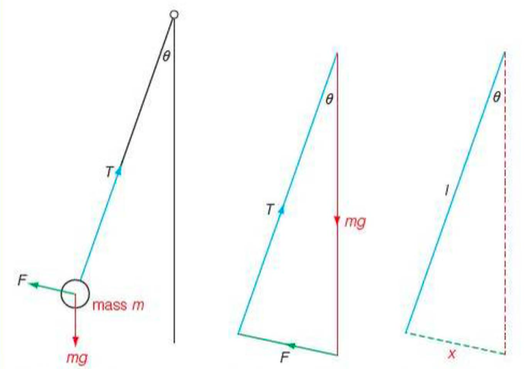
⇒ On the left, this shows a pendulum held at rest by a small sideways force, F
⇒ The middle diagram shows the three forces acting on the bob to keep it in equilibrium
⇒ The force F = mgsinθ (simple trigonometry as the bottom left angle is a right angle). For small angles we have θ ≈ sinθ, and therefore F = mgθ
⇒ The third diagram shows that x can be related to the length of the pendulum, l, by x = ltanθ (simple trigonometry)
- For small angles, we also have θ ≈ tanθ and therefore x = lθ and θ = x/l
⇒ Combining these equations gives: F = mgx⁄l
⇒ When the pendulum is released, the restoring force now acts in the opposite direction. So:
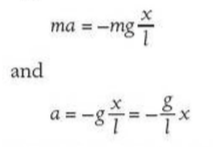
⇒ This is the defining equation for SHM because the acceleration is proportional to, and in the opposite direction to, the displacement. Therefore:
